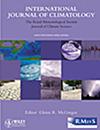Predictability of the Indian Ocean Dipole: A Neural Network Approach
Abstract
In light of the importance of the formation of dipoles in the Indian Ocean (IO), it becomes pertinent to investigate whether or not such events are inherently predictable. The authors investigate if the formation of a dipole is the result of local weather events or that of the dynamics of the system that generates the sea surface temperature (SST) time series. In the present study, artificial neural network prediction errors in different temporal regions have been analysed to answer the question for the 1997 event. It is found that the phenomenon was a consequence of the state of the SST system as a whole together with the evolution laws. As El-Nino and intraseasonal oscillations (ISO) are believed to have forced the formation of the 1997 dipole, the prediction errors are also analysed to statistically investigate such possibility. It is concluded that the ISO may provide the stochastic forcing to the Indian Ocean dipole (IOD) which is in agreement with the observations made by dynamical modelling of the system. The model is further evaluated for categorical forecast skills to forecast the anomalous points. The analysis shows that the model is capable of forecasting the anomalous points in the SST time series and that the dipole formation is a result of the deterministic laws governing the IO SST time series.

 求助内容:
求助内容: 应助结果提醒方式:
应助结果提醒方式:


